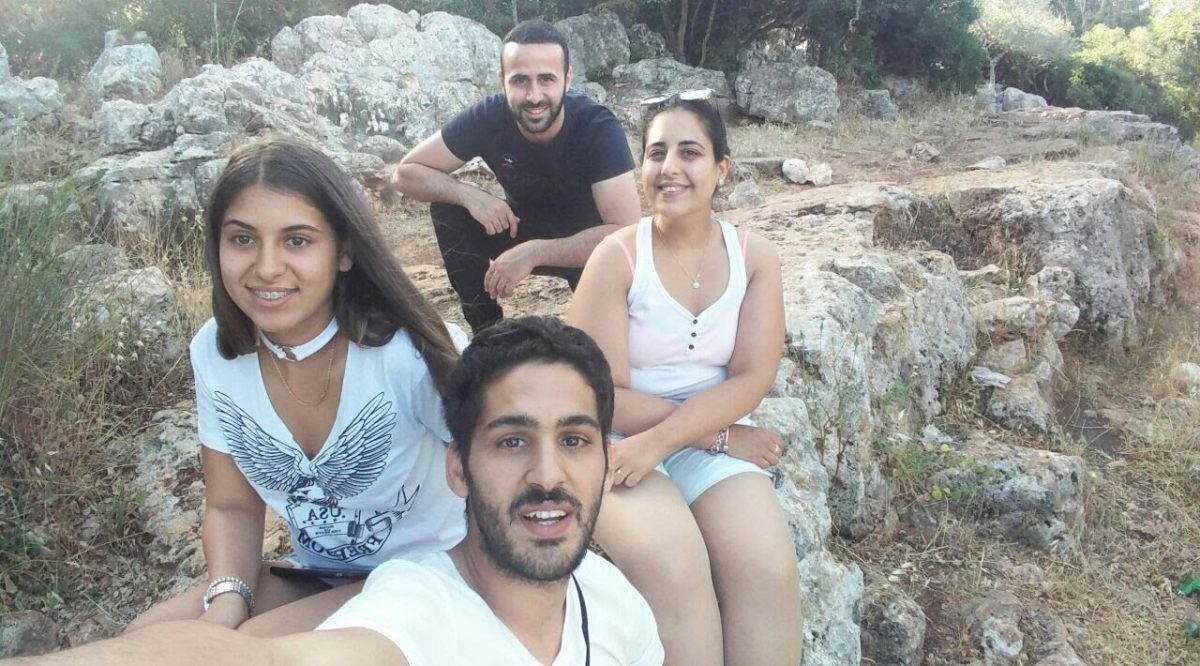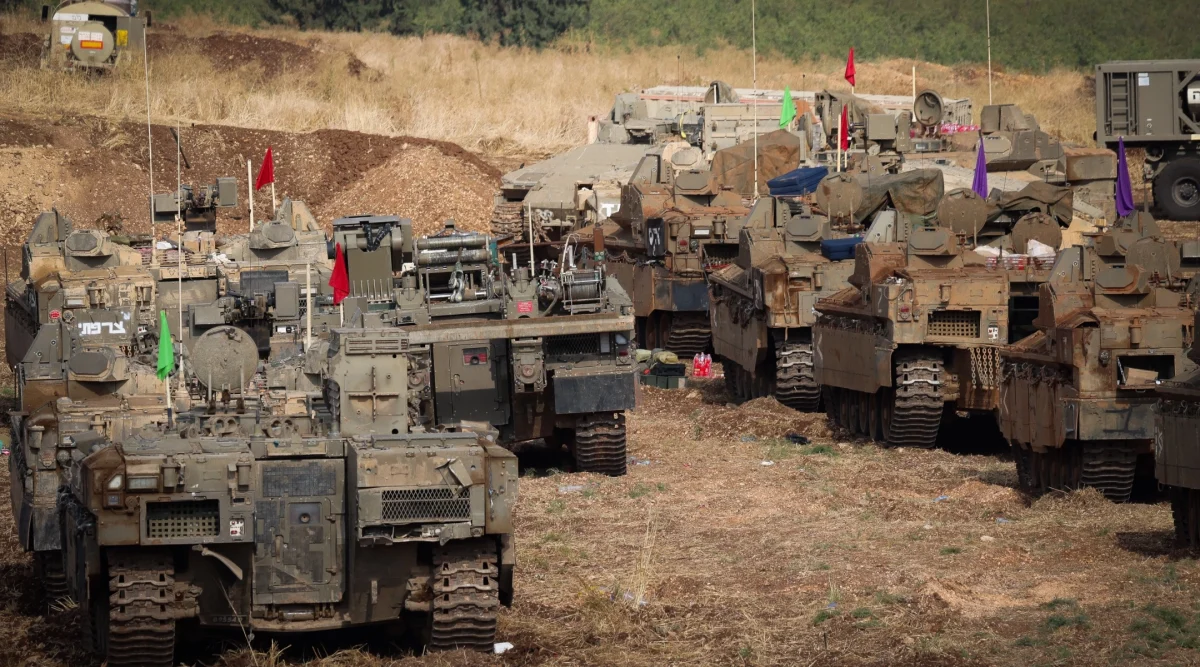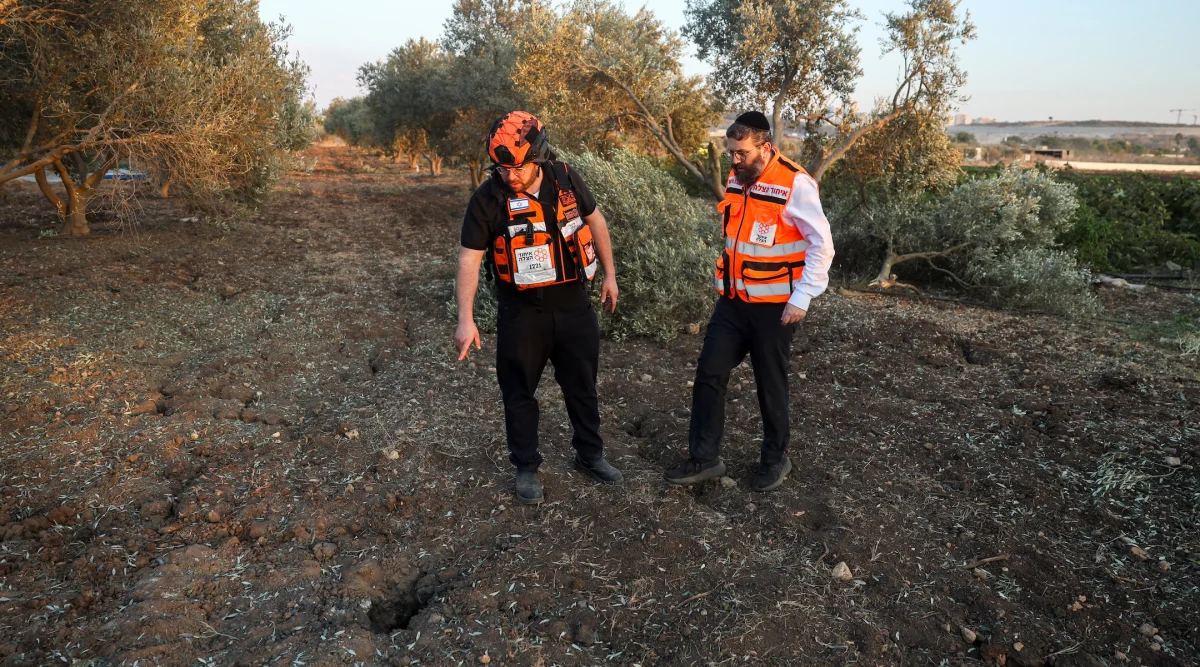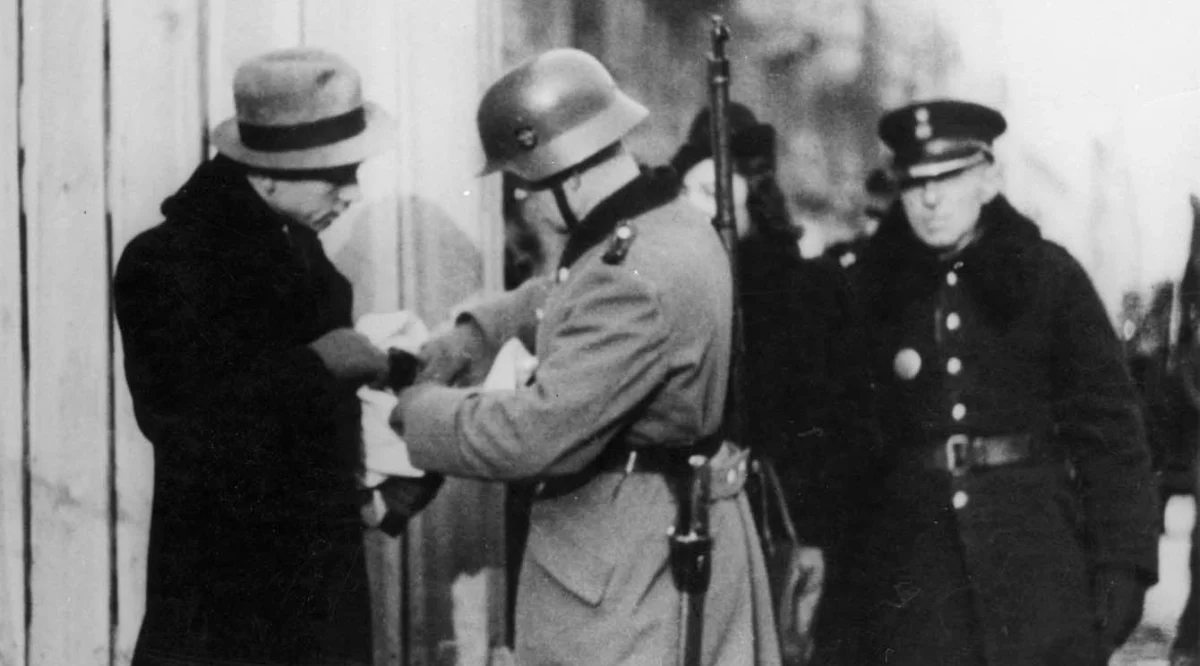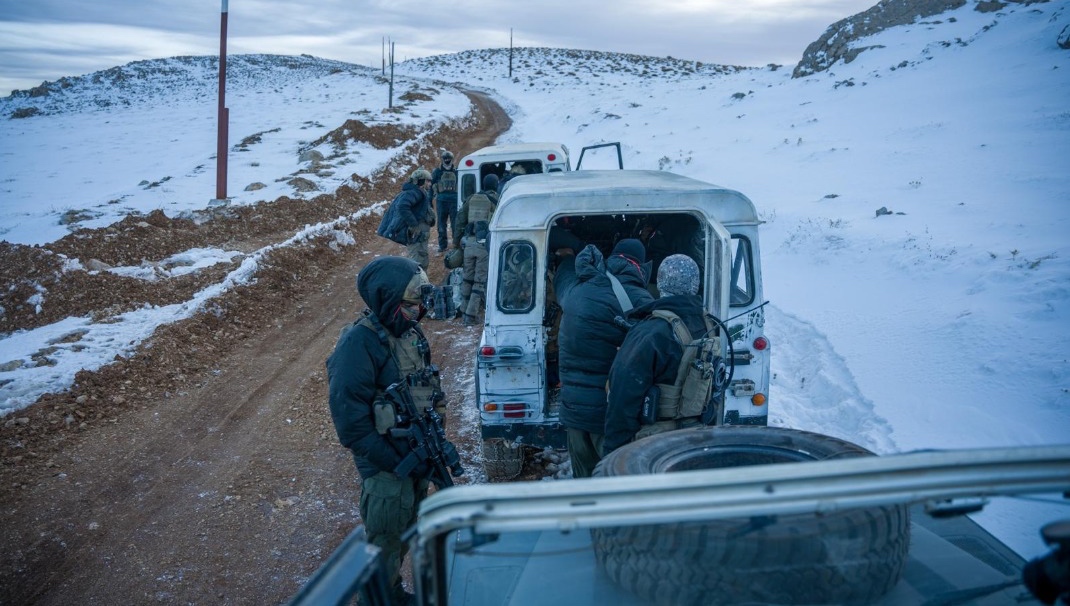(JTA) — On Saturday night, Iran fired more than 200 missiles and drones at Israel.
The unprecedented attack — from Iranian soil to Israeli territory — is the most direct confrontation ever between the two longtime adversaries. It threatens to spiral into a broader regional war whose consequences could also likewise be without precedent.
In the meantime it has led to fear and injury — a 10-year-old was wounded — as well as surreal scenes, such as weapons fired by the Islamic Republic flying past the Dome of the Rock and Al-Aqsa compound in Jerusalem, a Muslim holy site.
The attack is the culmination of long-running trends and explosive recent events: It comes following a decades-long “shadow war” between Israel and Iran. It is also occurring more than six months after Hamas’ Oct. 7 attack on Israel, which launched the ongoing war in Gaza as well as intensifying clashes between Israel and Hezbollah, the Lebanese terror group and Iranian proxy.
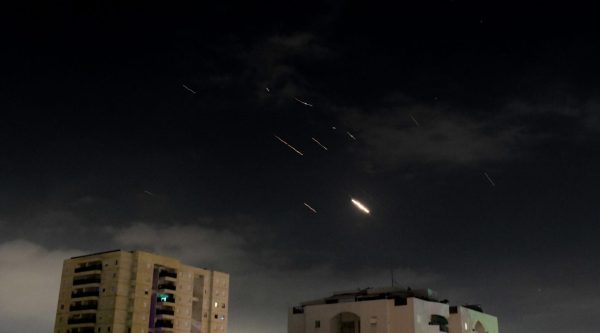
And the strike was no surprise. After Israel killed three senior Iranian military commanders in Damascus nearly two weeks ago, Iran vowed revenge. On Friday, U.S. intelligence reports predicted an Iranian attack within 24 to 48 hours. They were correct.
Because this has never happened before, what happens next is unclear. Israeli leaders told citizens just before 4 a.m. local time that they no longer needed to remain near their safe rooms, indicating that the immediate attack appears to be over. But it has sparked fears of a wider conflagration across an already combusting Middle East have spiked as the United States and other Israeli allies have come to its defense.
Here’s an explanation of the road to Saturday’s attack, and where it may go from here.
How did we get here?
Iran and Israel have been fighting indirectly for decades. Iranian leaders have vowed repeatedly to wipe out Israel and have funded and armed terror groups on Israel’s borders — including Hamas in Gaza and Hezbollah in Lebanon.
Israel has responded in a variety of ways: It has fought Iranian proxies. It has bombed or otherwise halted hundreds of weapons shipments to those groups. It is believed to have previously killed Iranian military officials.
And more than anything, it has opposed Iran’s nuclear program by trying to isolate the country diplomatically as well as by allegedly killing a series of Iranian nuclear scientists. For years, experts and politicians were consumed by debate over whether Israel would — or should — bomb Iran’s nuclear facilities. It has not yet done so.
Combating Iran has especially been a focus of Israeli Prime Minister Benjamin Netanyahu, who said shortly before he returned to office, in late 2022, that Israel faced “three challenges: Iran, Iran, Iran. Because all the other challenges pale in comparison if we are threatened by a regime that calls for our destruction, that is armed with the weapons of mass death.”
Hamas, the terror group that governs Gaza and is a proxy of Iran, invaded Israel on Oct. 7 — launching a bloody, ongoing war in Gaza. The extent to which Iran knew about or was responsible for that attack has been up for debate, but Iran praised the attack and in the half-year since, its proxies have stepped up their strikes on Israel and its allies.
The heaviest fire has come from Hezbollah, a large terror group on Israel’s northern border in Lebanon that has been exchanging fire with Israel constantly since Oct. 7. Hundreds have been killed in those clashes and most Israelis believe the conflict will escalate to an all-out war, the first on that border since 2006.
Why did Iran attack now?
Earlier this month, Israel is believed to have killed three senior Iranian military officials at the Iranian embassy complex in Damascus. The officials, from Iran’s Islamic Revolutionary Guards Corps, helped oversee Iranian operations in Syria and Lebanon, which both border Israel.
This is not the first time Israel has allegedly taken aim at Iranian officials in Syria since Oct 7 — it reportedly killed another in a December strike in Damascus. But the strike nearly two weeks ago was more extensive and at an Iranian diplomatic compound.
Iran vowed to retaliate. “The evil regime made a mistake and it should be punished and will be punished,” Iran’s Supreme Leader Ayatollah Ali Khamenei said earlier this week.
Israeli and American officials took that threat seriously. Despite divisions over the war in Gaza, U.S. officials vowed to stand by Israel if it were attacked. Earlier this week, the United States warned its diplomatic staff in Israel to remain in population centers out of fear of an Iranian attack.
A day before the attack, following a meeting with a senior U.S. military official who flew to Israel to address the situation, Israeli Defense Minister Yoav Gallant said, “We are prepared to defend ourselves on the ground and in the air, in close cooperation with our partners, and we will know how to respond.”
What happened during the attack?
Intelligence reports indicated that Iran might, for the first time, attack Israel directly. They were correct. Late on Saturday night, Iran shot hundreds of drones and missiles at sites across Israel.
The scope of the attack was unusual. Attacks by Iranian proxies usually focus on one area of the country — such as the northern border or the area near Gaza — but Iranian projectiles appeared to fly towards all parts of Israel. They were even cited in places Islamist militants tend to avoid targeting, such as Jerusalem, which is a holy city to Muslims, and Palestinian communities in the West Bank.
Damage from the strike, as of Sunday morning Israel time, appeared to be minimal. A young girl in Israel’s south was seriously wounded. A military base sustained some damage.
But the Israel Defense Forces says most of the incoming fire was intercepted. Several hours after the attack began, Israelis were told they no longer needed to remain close to their home bomb shelters.
The attack was stemmed with help from Israel’s allies. The United States and United Kingdom helped shoot down missiles, as did Jordan, which neighbors Israel and the West Bank to the east, and shot down projectiles over its airspace.
“In recent years, and especially in recent weeks, Israel has been preparing for a direct attack by Iran,” Netanyahu said early Sunday morning. “Our defensive systems are deployed; we are ready for any scenario, both defensively and offensively.”
What happens next?
This may be the end of this round of conflict or the beginning of a wider war.
A statement from Iran’s mission to the United Nations seemed to presage both possibilities. On one hand, it said, “Iran’s military action was in response to the Zionist regime’s aggression against our diplomatic premises in Damascus. The matter can be deemed concluded.”
But it then added, “However, should the Israeli regime make another mistake, Iran’s response will be considerably more severe. It is a conflict between Iran and the rogue Israeli regime, from which the U.S. MUST STAY AWAY!”
Israeli officials have also been noncommittal. “We have determined a clear principle: Whoever harms us, we will harm them. We will defend ourselves against any threat and will do so level-headedly and with determination,” Netanyahu said. Gallant said, “We are prepared for any further threats, and are determined to defend our citizens.”
Ever since the Oct. 7 attack, fears of a wider regional war have escalated. Shortly after the Hamas attack, President Joe Biden warned adversaries of Israel not to broaden the conflict.
But since then, there has been fighting on multiple fronts: in Gaza, Lebanon, the West Bank, Yemen and beyond.
“This is an incredibly volatile time in the Middle East,” U.S. Secretary of State Antony Blinken said in February. “I would argue that we’ve not seen a situation as dangerous as the one we’re facing now across the region since at least 1973, and arguably even before that.”
Some voices in Israel are calling on it to strike back. Culture and Sports Minister Miki Zohar, a Netanyahu ally, said Iran’s strike gave Israel “broad international legitimacy to strike Iran with unprecedented force.”
Following the strike, an unnamed Israeli official said Israel’s response would be coordinated with allies. Now, the Israeli decision about what to do next belongs to the country’s war cabinet — made up of Netanyahu, Gallant and former Defense Minister Benny Gantz.
Whether they decide to strike back may determine whether this round of conflict is over, or whether it could lead to an even larger war.
—
The post Iran attacks Israel: How we got here and what might happen next appeared first on Jewish Telegraphic Agency.










